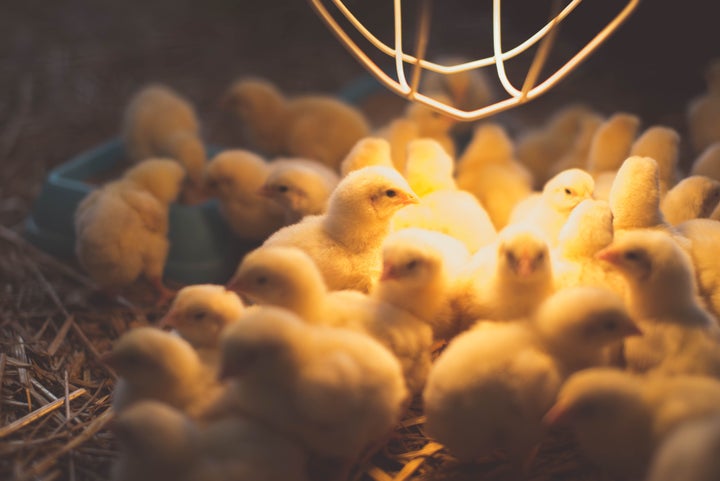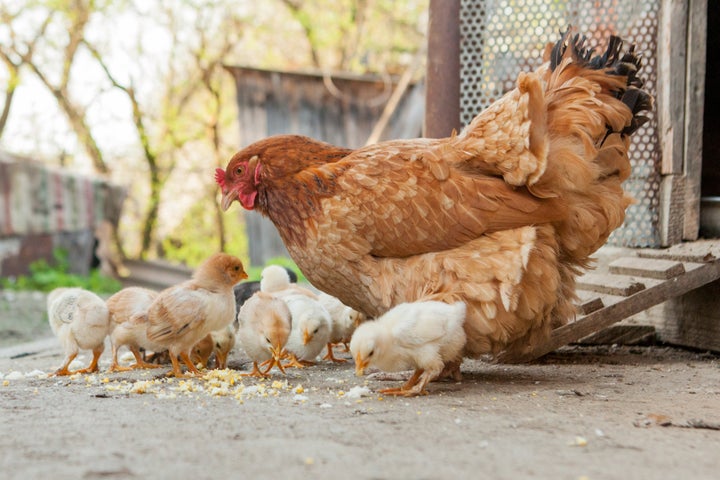The coronavirus pandemic has changed the way most of us cook, shop and eat, as we dread trips to the grocery store and consider growing some of our food. And the cost of eggs, a major staple for U.S. consumers, has dramatically increased, rising 16%, according to the latest report from the U.S. Bureau of Labor Statistics.
So it follows that Google has seen a steep rise in the search terms “live chickens” and “backyard chickens” ― their highest interest in the past 12 months ― and hatcheries have been inundated with calls and emails for orders as people try to keep birds as pets and produce their own eggs.
The urge to raise backyard chickens has even affected such international hotties as Tom Holland, who caved to the trend, and in so doing racked up close to a million views on his Instagram story.
But just because you’re bored in the house doesn’t mean you should purchase chickens. HuffPost chatted with Rebecca Cowans, the owner-operator of Down by the Bay Backyard Poultry in Prince Edward Island, Canada, as well as Tom Watkins, the vice president of Murray McMurray Hatchery in Webster City, Iowa, about some of the unexpected challenges and benefits for newbie backyard chicken farmers.
First of all, you can’t just go out and buy a laying hen
Newbies may be unaware that purchasing a hen who’s at the “laying” stage isn’t common (meaning, you can’t drive down to your local farm and pick up a hen this afternoon and expect eggs tomorrow morning for your frittata).
Instead, baby chicks are typically available from February to October at hatcheries and farm stores. According to Cowans, you’re highly unlikely to find someone selling hens because “the only time you’re going to be able to purchase a ready-to-lay hen is if somebody is thinning their flocks or if somebody is getting out of [business]. And that’s only in the fall, when everybody has raised their birds and they’ve got too many.”
This means that most beginners will be in the market for chicks, which take between 16-24 weeks to grow to egg-laying maturity.
The first few months are the most time- and labor-intensive
While both Cowans and Watkins assured that it isn’t complicated to raise chicks, the first few months require extra attention and some equipment. Chicks must be kept safe and warm for the first four to six weeks while they grow out their feathers to prepare for their entry to the outside world.
Some hatcheries, such as Murray McMurray’s, offer kits to help support that process. You can also set up a brooder box at home, which can be as simple as installing a safely fixed heat source (such as 40-watt light bulbs or brooder plates) into a giant Rubbermaid container.

As Watkins noted, “It is the first four weeks that is the most intensive. They need to be kept at the correct temperature, ventilated but not in a draft, with clean water and food ― that’s about it. It is important to check on them regularly, but what I think makes it easy is that there are very obvious [sensory] cues. If chickens are uncomfortable, they will make a ruckus. If they are too hot, they are really spread out and get pretty noisy. If they are content, they are chirping pretty quietly for the most part. It’s visually very easy to tell if they are all right.”
Here’s how much it’ll cost you to raise chickens
While purchasing a chick is relatively inexpensive, ranging anywhere from $1.50 to $5 for commercial or hybrid varieties and $10 to $25 for heritage varieties, a great deal of cost can go into the raising of the animal before an egg is produced.
“I’ve heard it said that that first egg costs $2,000,” Watkins said.
That estimated expense mostly has to do with raising the hen in the months leading up to it being able to produce eggs, including feeding and sheltering the animal. Watkins explained, “It takes about 50 pounds of feed to get one bird to a laying state. And then the coop itself is typically $400 to $500.”

The unexpected benefit of raising chickens
One unexpected benefit of raising backyard birds could be how it shifts your perspective.
Watkins said the relative simplicity of raising birds made him reevaluate other areas of his life: “It really is a gateway into being more sustainable, because of how really easy it was. We have 25 birds at home. It takes me 5 minutes a day to make sure they have feed and water and pick up eggs.”
And Cowans noted that depending on the breed, backyard chickens can be wonderful pets: “They are big lumps of joy.”